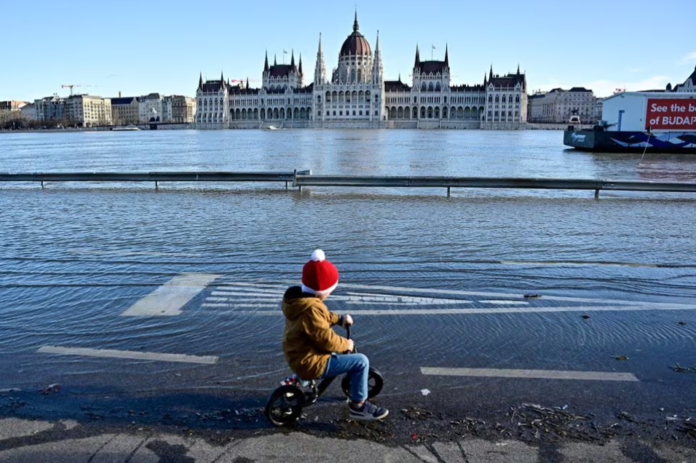The River Danube burst its banks in Budapest on Thursday, with water levels at their highest in a decade as heavy rain and snow followed by mild weather triggered unusually early winter floods, according to Reuters.
Hungary’s General Directorate for Water Management said the Danube peaked at 6.93 metres late on Wednesday, below the 8.91 metres recorded in 2013 when extreme flooding in Central Europe began after heavy rains in late May.
While this year’s Danube flooding has not caused any major damage in Budapest, experts cautioned that climate change could make early floods more frequent.
“If we look at the bigger picture, we can see that winter precipitation is growing and with the rise of temperatures we will see less snowfall plus it can melt earlier,” said climate researcher Anna Kis, who works for the “1.5 degrees” climate project.
“Thus we can assume that in the future the floods caused by snow melting that used to occur in the spring could happen earlier, possibly during the winter months.”
The water authority said the last time the Danube’s level exceeded 6 metres in a month of December was in 1987, but then it did not flood the embankment roads.
“There was a great amount of rainfall in the tributaries of the Danube and snow melted due to the mild but wet weather, so the flood came earlier,” it said, adding that renewed flooding in the spring could not be excluded.
People in Budapest walked along the river in the sunshine, enjoying the rare sight of waves splashing the embankment below the parliament building.


